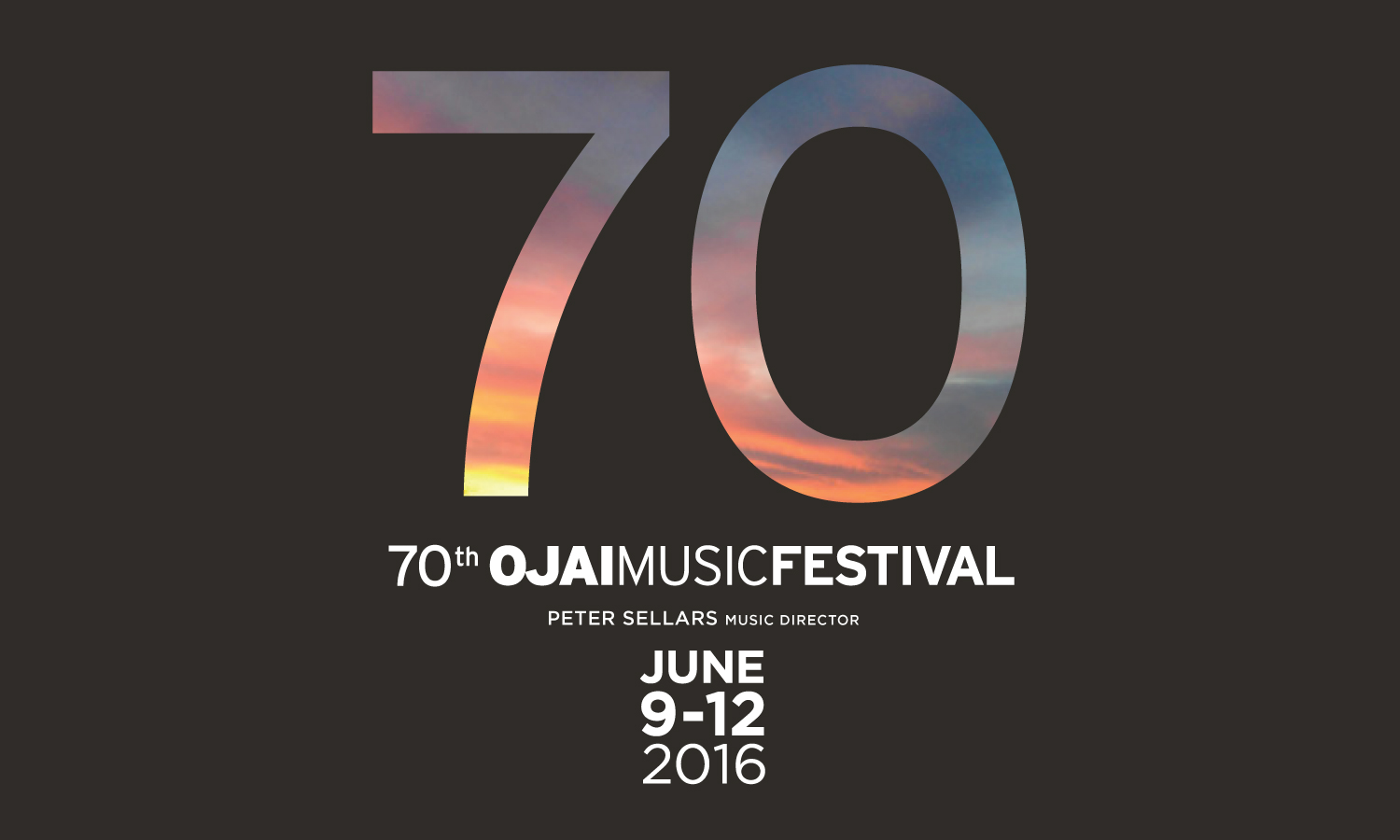Eric Dudley, conductor
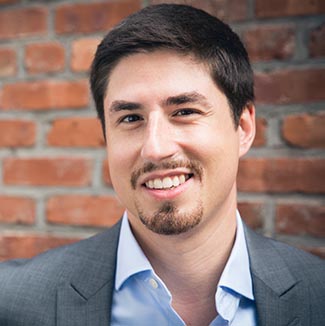
 Through his activities as a conductor, vocalist, pianist, and composer, Eric Dudley enjoys a busy schedule of performances in the United States and abroad. After distinguished tenures as assistant conductor for both the Cincinnati Symphony Orchestra and the Princeton Symphony, he recently appeared as principal conductor for the 2015 Bendigo Festival of Exploratory Music in Australia. Among his latest guest conducting engagements are the National Symphony Orchestra at the Kennedy Center, Hartford Symphony Orchestra (CT), Adelphi Chamber Orchestra (NJ), TENET Vocal Ensemble (NY), Signal Ensemble (NY), International Contemporary Ensemble (ICE), and the Melbourne International Arts Festival. He served for four years on the part-time faculty of Mannes College in New York as director of the Mannes Prep Philharmonic and The New School Chorus, and begins his next appointment as music director of the San Francisco Conservatory Orchestra in the 2016–17 concert season.
Through his activities as a conductor, vocalist, pianist, and composer, Eric Dudley enjoys a busy schedule of performances in the United States and abroad. After distinguished tenures as assistant conductor for both the Cincinnati Symphony Orchestra and the Princeton Symphony, he recently appeared as principal conductor for the 2015 Bendigo Festival of Exploratory Music in Australia. Among his latest guest conducting engagements are the National Symphony Orchestra at the Kennedy Center, Hartford Symphony Orchestra (CT), Adelphi Chamber Orchestra (NJ), TENET Vocal Ensemble (NY), Signal Ensemble (NY), International Contemporary Ensemble (ICE), and the Melbourne International Arts Festival. He served for four years on the part-time faculty of Mannes College in New York as director of the Mannes Prep Philharmonic and The New School Chorus, and begins his next appointment as music director of the San Francisco Conservatory Orchestra in the 2016–17 concert season.
As a founding member of Roomful of Teeth, Dudley is a performer on the group’s 2014 Grammy Award–winning debut album; their latest album, Render, was nominated in the same category in 2016 and includes one of his compositions. For eight seasons, Dudley has also been a tenor in the Grammy-nominated Choir of Trinity Wall Street, where in addition to his role as an ensemble and solo singer, he has prepared the choir for performances at the Brooklyn Academy of Music, performed as a pianist and harpsichordist on Trinity’s chamber series, and served as assistant and guest conductor for a number of the Trinity Choir and Baroque Orchestra’s concert offerings. His own works have received premieres by the Hartford Symphony Orchestra, Roomful of Teeth, Quey Percussion, and through a residency grant from Meet the Composer and the New England Foundation for the Arts. Born in Canada and raised in Connecticut, Dudley received his bachelor’s degree in composition from the Eastman School of Music, and earned master’s and doctorate degrees in orchestral conducting as the recipient of the Dean’s Prize from Yale.
Dina El Wedidi
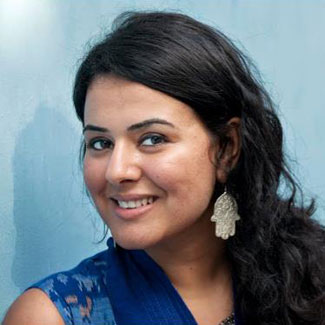
 With her powerful, nuanced voice and authentic style, Egyptian singer and composer Dina El Wedidi (دينا الوديدي) has spent the past six years carving out her place in the Egyptian music scene. While studying oriental languages at the University of Cairo, Dina joined El Warsha Theatre Troupe, exploring Egyptian folklore and performing in such unlikely places as a Cairo prison, and later she performed classical Egyptian and Arabic songs with the Habayebna band. These experiences pushed Dina to sing in many styles, and were the impetus for her to begin composing her own songs. In 2011, she took the fundamental next step and formed her own band; from here her success has soared.
With her powerful, nuanced voice and authentic style, Egyptian singer and composer Dina El Wedidi (دينا الوديدي) has spent the past six years carving out her place in the Egyptian music scene. While studying oriental languages at the University of Cairo, Dina joined El Warsha Theatre Troupe, exploring Egyptian folklore and performing in such unlikely places as a Cairo prison, and later she performed classical Egyptian and Arabic songs with the Habayebna band. These experiences pushed Dina to sing in many styles, and were the impetus for her to begin composing her own songs. In 2011, she took the fundamental next step and formed her own band; from here her success has soared.
Ara Guzelimian, Ojai Talks Director
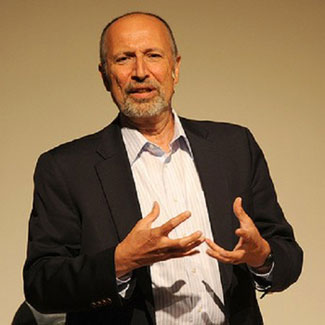
 Provost and dean of The Juilliard School, Ara Guzelimian is the former senior director and artistic advisor to Carnegie Hall and artistic director from 1992 to 1997 of the Ojai Music Festival, where he worked closely with Festival music directors Pierre Boulez, John Adams, Kent Nagano, Michael Tilson Thomas, and Emanuel Ax. Guzelimian also served as artistic administrator of the Aspen Music Festival and was associated with the Los Angeles Philharmonic for 15 years as producer of the orchestra’s national radio broadcasts and as artistic administrator. He has been active as a radio producer and has written for numerous publications. Guzelimian was awarded the title Chevalier des Arts et des Lettres by the French government for his contributions to French music and culture.
Provost and dean of The Juilliard School, Ara Guzelimian is the former senior director and artistic advisor to Carnegie Hall and artistic director from 1992 to 1997 of the Ojai Music Festival, where he worked closely with Festival music directors Pierre Boulez, John Adams, Kent Nagano, Michael Tilson Thomas, and Emanuel Ax. Guzelimian also served as artistic administrator of the Aspen Music Festival and was associated with the Los Angeles Philharmonic for 15 years as producer of the orchestra’s national radio broadcasts and as artistic administrator. He has been active as a radio producer and has written for numerous publications. Guzelimian was awarded the title Chevalier des Arts et des Lettres by the French government for his contributions to French music and culture.
Amin Maalouf, poet
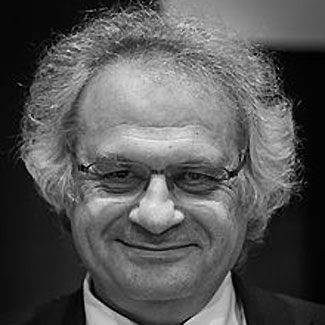
 Born in Beirut in 1949, Amin Maalouf has lived in France since 1976. After studying sociology and economics, Maalouf joined the Lebanese daily An-Nahar, for which he travelled the world covering numerous events, from the fall of the Ethiopian monarchy to the last battle of Saigon. Forced to emigrate by the war in Lebanon, he settled in Paris, where he resumed journalism, and from where he started to travel again, from Mozambique to Iran and from Argentina to the Balkans. He became editor of the international edition of An-Nahar, then editor-in-chief of the weekly Jeune Afrique, before giving up all his posts to dedicate himself to literature.
Born in Beirut in 1949, Amin Maalouf has lived in France since 1976. After studying sociology and economics, Maalouf joined the Lebanese daily An-Nahar, for which he travelled the world covering numerous events, from the fall of the Ethiopian monarchy to the last battle of Saigon. Forced to emigrate by the war in Lebanon, he settled in Paris, where he resumed journalism, and from where he started to travel again, from Mozambique to Iran and from Argentina to the Balkans. He became editor of the international edition of An-Nahar, then editor-in-chief of the weekly Jeune Afrique, before giving up all his posts to dedicate himself to literature.
Luca Mendoza, composer
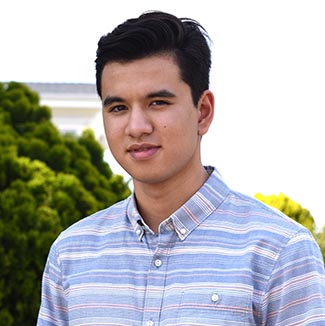
 Luca Mendoza (17) a junior at Crossroads School, studies Jazz piano with Alan Pasqua, classical piano with Rina Dokshitsky and plays in Lee Secard’s Colburn Jazz ensembles and Evan Avery’s Crossroads A Band. Luca is the 2016 National YoungArts Finalist for Jazz piano and Merit Jazz composition winner. Also this year, Luca won the Jazz performance LA Music Center Spotlight Award after being the Honorable Mention Spotlight recipient in 2015. He received an Outstanding Solo Award at the Monterey NextGen Jazz Festival and four Downbeat Magazine Student Music Awards for composition. He has been chosen for the 2016 Monterey NextGen Jazz Orchestra, and was a participant in the Vail Jazz Workshop and Brubeck Jazz Colony. Luca has also been a part of the Colburn Musical Encounters for five years, fostering music education throughout Los Angeles inner city schools. His other awards include first or honorable mentions in the Southwest Youth Music Festival and Glendale classical competitions as well as a solo award and first place in the Fullerton Jazz Festival. He has also recently performed at the Panama Jazz Festival and chamber music with the Elizabeth Mandell Music Institute during a live radio broadcast.
Luca Mendoza (17) a junior at Crossroads School, studies Jazz piano with Alan Pasqua, classical piano with Rina Dokshitsky and plays in Lee Secard’s Colburn Jazz ensembles and Evan Avery’s Crossroads A Band. Luca is the 2016 National YoungArts Finalist for Jazz piano and Merit Jazz composition winner. Also this year, Luca won the Jazz performance LA Music Center Spotlight Award after being the Honorable Mention Spotlight recipient in 2015. He received an Outstanding Solo Award at the Monterey NextGen Jazz Festival and four Downbeat Magazine Student Music Awards for composition. He has been chosen for the 2016 Monterey NextGen Jazz Orchestra, and was a participant in the Vail Jazz Workshop and Brubeck Jazz Colony. Luca has also been a part of the Colburn Musical Encounters for five years, fostering music education throughout Los Angeles inner city schools. His other awards include first or honorable mentions in the Southwest Youth Music Festival and Glendale classical competitions as well as a solo award and first place in the Fullerton Jazz Festival. He has also recently performed at the Panama Jazz Festival and chamber music with the Elizabeth Mandell Music Institute during a live radio broadcast.
Andrew Moses, composer
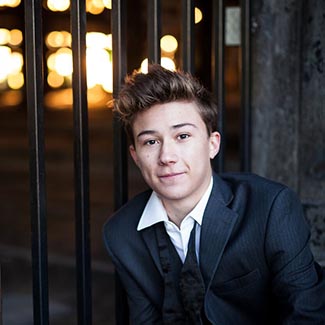
 Andrew Moses (17) is a composer and clarinetist from Los Angeles. Hailed at age 13 as “an artist to watch” and “a musician of enormous talent”, his compositions have been performed, premiered, and read by groups such as the Los Angeles Philharmonic, the Calder Quartet, and the Argus Quartet. Andrew has been a Composer Fellow with LA Phil since 2013, and continues in 2016-2017 as an LA Phil Senior Fellow. His chamber works have been performed in concert as part of the 2015 Hear Now Festival of New Music in Los Angeles, by wild Up at the Regent Theater as part of the LA Phil’s “Next on Grand” Festival, as part of the Yellow Barn Young Artists Program in Vermont, and in readings by the Los Angeles Master Chorale and Los Angeles Philharmonic Chamber Ensembles. The LA Phil premiered two short symphonic works of his at Walt Disney Concert Hall in the past two seasons. Upcoming projects include a commission by the LA Phil for their groundbreaking Green Umbrella new music series to be premiered in October and conducted by John Adams. He has participated in masterclasses with composers such as Kaija Saariaho, John Corigliano, Magnus Lindberg, Christopher Theofanidis, and Esa-Pekka Salonen; and he is currently a student of Andrew Norman. As a clarinet student of Dr. Margaret Thornhill, Andrew made his solo New York City recital debut last year at the home of Charles and Susan Avery Fischer as part of iPalpiti Musicales. He has been featured twice on From the Top on NPR and is a recipient of From the Top’s Jack Kent Cooke Young Artist Award. He was a winner of the 2014 Young Musicians Foundation National Debut Concerto Competition, the Torrance Symphony Orchestra Concerto Competition, the Beverly Hills Auditions, and the Midland National Young Artist Competition. Andrew has thrice participated in the Yellow Barn Young Artists Festival in Vermont; and he is a Junior of iPalpiti Artists International. Andrew has appeared as a concerto soloist with several area orchestras, having performed as concerto soloist in the Walt Disney Concert Hall at the age of 11. Committed to serving the community through Arts Leadership Initiatives, the California Senate joined in recognizing his contributions to the local arts and presented Andrew with the “Making a Difference Award”. In his spare time, he enjoys taekwondo (he is a third degree black belt), poetry, and his community of faith.
Andrew Moses (17) is a composer and clarinetist from Los Angeles. Hailed at age 13 as “an artist to watch” and “a musician of enormous talent”, his compositions have been performed, premiered, and read by groups such as the Los Angeles Philharmonic, the Calder Quartet, and the Argus Quartet. Andrew has been a Composer Fellow with LA Phil since 2013, and continues in 2016-2017 as an LA Phil Senior Fellow. His chamber works have been performed in concert as part of the 2015 Hear Now Festival of New Music in Los Angeles, by wild Up at the Regent Theater as part of the LA Phil’s “Next on Grand” Festival, as part of the Yellow Barn Young Artists Program in Vermont, and in readings by the Los Angeles Master Chorale and Los Angeles Philharmonic Chamber Ensembles. The LA Phil premiered two short symphonic works of his at Walt Disney Concert Hall in the past two seasons. Upcoming projects include a commission by the LA Phil for their groundbreaking Green Umbrella new music series to be premiered in October and conducted by John Adams. He has participated in masterclasses with composers such as Kaija Saariaho, John Corigliano, Magnus Lindberg, Christopher Theofanidis, and Esa-Pekka Salonen; and he is currently a student of Andrew Norman. As a clarinet student of Dr. Margaret Thornhill, Andrew made his solo New York City recital debut last year at the home of Charles and Susan Avery Fischer as part of iPalpiti Musicales. He has been featured twice on From the Top on NPR and is a recipient of From the Top’s Jack Kent Cooke Young Artist Award. He was a winner of the 2014 Young Musicians Foundation National Debut Concerto Competition, the Torrance Symphony Orchestra Concerto Competition, the Beverly Hills Auditions, and the Midland National Young Artist Competition. Andrew has thrice participated in the Yellow Barn Young Artists Festival in Vermont; and he is a Junior of iPalpiti Artists International. Andrew has appeared as a concerto soloist with several area orchestras, having performed as concerto soloist in the Walt Disney Concert Hall at the age of 11. Committed to serving the community through Arts Leadership Initiatives, the California Senate joined in recognizing his contributions to the local arts and presented Andrew with the “Making a Difference Award”. In his spare time, he enjoys taekwondo (he is a third degree black belt), poetry, and his community of faith.
Pauline Oliveros
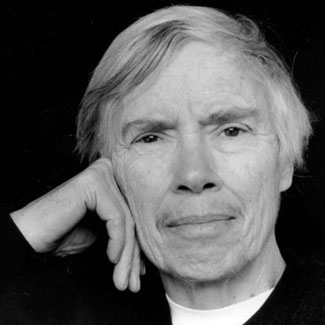
 Pauline Oliveros, composer, performer and humanitarian is an important pioneer in American Music. Acclaimed internationally, for four decades she has explored sound — forging new ground for herself and others.
Pauline Oliveros, composer, performer and humanitarian is an important pioneer in American Music. Acclaimed internationally, for four decades she has explored sound — forging new ground for herself and others.
Through improvisation, electronic music, ritual, teaching and meditation she has created a body of work with such breadth of vision that it profoundly effects those who experience it and eludes many who try to write about it.
Camilla Hoitenga, flute
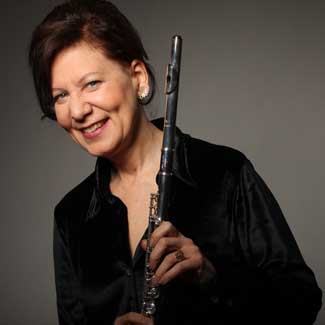
 Born in Grand Rapids, MI, flutist Camilla Hoitenga studied in the United States, England, and France and eventually made her home in Germany, where she worked several years with Karlheinz Stockhausen. Following her own “path less traveled” she cultivates a repertoire ranging from Bach and Schubert to concertos written for her by Kaija Saariaho, Pèter Koeszeghy or Ken-Ichiro Kobayashi; from Stockhausen’s theatrical Zungenspitzentanz for piccolo to Jean-Baptiste Barrière’s state-of-the-art pieces for live video and electronics to improvisations and recitals with pianist and sound-artist Taavi Kerikmäe. Whether accompanied by orchestras such as the Chicago Symphony or the London Philharmonic or playing alone on stage, Hoitenga captivates her audiences with intense performances, acclaimed by the press as “brilliant,” “alluring,” and “ideally transparent and precise.”
Born in Grand Rapids, MI, flutist Camilla Hoitenga studied in the United States, England, and France and eventually made her home in Germany, where she worked several years with Karlheinz Stockhausen. Following her own “path less traveled” she cultivates a repertoire ranging from Bach and Schubert to concertos written for her by Kaija Saariaho, Pèter Koeszeghy or Ken-Ichiro Kobayashi; from Stockhausen’s theatrical Zungenspitzentanz for piccolo to Jean-Baptiste Barrière’s state-of-the-art pieces for live video and electronics to improvisations and recitals with pianist and sound-artist Taavi Kerikmäe. Whether accompanied by orchestras such as the Chicago Symphony or the London Philharmonic or playing alone on stage, Hoitenga captivates her audiences with intense performances, acclaimed by the press as “brilliant,” “alluring,” and “ideally transparent and precise.”
Los Jornaleros del Norte
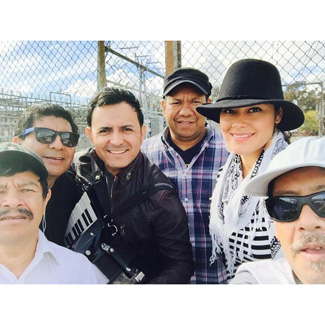
 It’s been 15 years since Los Jornaleros del Norte began singing about and for the worker and immigrant community in the United States. It was an immigration raid at a corner of day laborers in the City of Industry, California, which was the impetus for the creation of music and poetry of resistance for them. On that day, a day laborer and musician, Omar Sierra, wrote “El Corrido de Industry” which recounted the events of the raid. This inspired others to share their stories through song and with the help of Pablo Alvarado, founding member and Director of NDLON (National Day Labor Organizing Network), day laborers began to write, sing, and share their struggles and hopes through music and poetry. Since then, they’ve become the soundtrack for the day laborer and immigrant community’s struggle for visibility, inclusion, and equality. Their songs are a historical document of the experiences of the migrant worker community in the United States.
It’s been 15 years since Los Jornaleros del Norte began singing about and for the worker and immigrant community in the United States. It was an immigration raid at a corner of day laborers in the City of Industry, California, which was the impetus for the creation of music and poetry of resistance for them. On that day, a day laborer and musician, Omar Sierra, wrote “El Corrido de Industry” which recounted the events of the raid. This inspired others to share their stories through song and with the help of Pablo Alvarado, founding member and Director of NDLON (National Day Labor Organizing Network), day laborers began to write, sing, and share their struggles and hopes through music and poetry. Since then, they’ve become the soundtrack for the day laborer and immigrant community’s struggle for visibility, inclusion, and equality. Their songs are a historical document of the experiences of the migrant worker community in the United States.
Susan McClary, musicologist
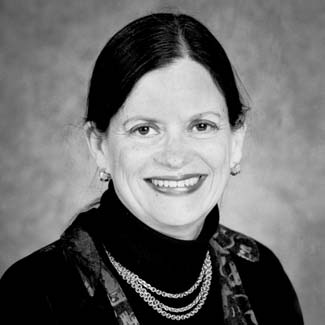
 Dr. Susan McClary (Professor of Music at Case Western Reserve University; Distinguished Professor Emerita, UCLA) focuses her research on the cultural criticism of music. Her books include Feminine Endings: Music, Gender, and Sexuality; Georges Bizet: Carmen; Conventional Wisdom: The Content of Musical Form; Modal Subjectivities: Renaissance Self-Fashioning in the Italian Madrigal; Reading Music; Desire and Pleasure in 17th-Century Music; and Structures of Feeling in 17th-Century Expressive Culture. McClary received a MacArthur Foundation “Genius” Fellowship in 1995, and her work has been translated into at least 20 languages. She is now completing a book titled The Passions of Peter Sellars: The Staging of Music Drama.
Dr. Susan McClary (Professor of Music at Case Western Reserve University; Distinguished Professor Emerita, UCLA) focuses her research on the cultural criticism of music. Her books include Feminine Endings: Music, Gender, and Sexuality; Georges Bizet: Carmen; Conventional Wisdom: The Content of Musical Form; Modal Subjectivities: Renaissance Self-Fashioning in the Italian Madrigal; Reading Music; Desire and Pleasure in 17th-Century Music; and Structures of Feeling in 17th-Century Expressive Culture. McClary received a MacArthur Foundation “Genius” Fellowship in 1995, and her work has been translated into at least 20 languages. She is now completing a book titled The Passions of Peter Sellars: The Staging of Music Drama.
Claudia Rankine, poet
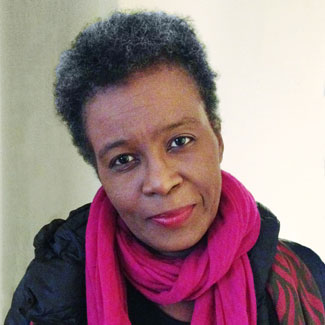
 Claudia Rankine is the author of five collections of poetry including Citizen: An American Lyric and Don’t Let Me Be Lonely; two plays including Provenance of Beauty: A South Bronx Travelogue; numerous video collaborations, and is the editor of several anthologies including The Racial Imaginary: Writers on Race in the Life of the Mind.For her book Citizen, Rankine won both the PEN Open Book Award and the Pen Literary Award, the NAACP Award, and the National Book Critics Circle Award for Poetry. Citizen was the first book ever to be named a finalist in both the poetry and criticism categories and was a finalist for the National Book Award. Citizen also holds the distinction of being the only poetry book to be a New York Times bestseller in the nonfiction category.
Claudia Rankine is the author of five collections of poetry including Citizen: An American Lyric and Don’t Let Me Be Lonely; two plays including Provenance of Beauty: A South Bronx Travelogue; numerous video collaborations, and is the editor of several anthologies including The Racial Imaginary: Writers on Race in the Life of the Mind.For her book Citizen, Rankine won both the PEN Open Book Award and the Pen Literary Award, the NAACP Award, and the National Book Critics Circle Award for Poetry. Citizen was the first book ever to be named a finalist in both the poetry and criticism categories and was a finalist for the National Book Award. Citizen also holds the distinction of being the only poetry book to be a New York Times bestseller in the nonfiction category.
Among her numerous awards and honors, Rankine is the recipient of the Poets & Writers’ Jackson Poetry Prize and fellowships from the Lannan Foundation and the National Endowment of the Arts. She lives in California and is the Aerol Arnold Chair in the University of Southern California English Department.
Roomful of Teeth
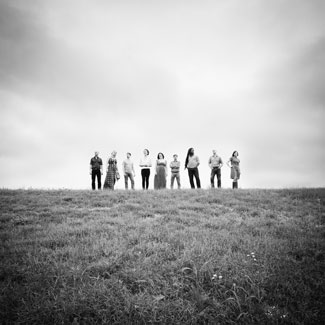
 Roomful of Teeth is a Grammy Award–winning vocal project dedicated to mining the expressive potential of the human voice. Through study with masters from singing traditions the world over, the eight-voice ensemble continually expands its vocabulary of singing techniques and, through an ongoing commissioning process, forges a new repertoire without borders. Founded in 2009 by Brad Wells, the group gathers annually at the Massachusetts Museum of Contemporary Art (MASS MoCA) in North Adams, MA, where they’ve studied Tuvan throat singing, yodeling, belting, Inuit throat singing, Korean P’ansori, Georgian singing, Sardinian cantu a tenore, Hindustani music, and Persian classical singing with some of the world’s top performers and teachers. Commissioned composers include Rinde Eckert, Judd Greenstein, Merrill Garbus (of tUnE-yArDs), Anna Clyne, Fred Hersch, Sarah Kirkland Snider, Michael Harrison, Sam Amidon, and Ted Hearne.
Roomful of Teeth is a Grammy Award–winning vocal project dedicated to mining the expressive potential of the human voice. Through study with masters from singing traditions the world over, the eight-voice ensemble continually expands its vocabulary of singing techniques and, through an ongoing commissioning process, forges a new repertoire without borders. Founded in 2009 by Brad Wells, the group gathers annually at the Massachusetts Museum of Contemporary Art (MASS MoCA) in North Adams, MA, where they’ve studied Tuvan throat singing, yodeling, belting, Inuit throat singing, Korean P’ansori, Georgian singing, Sardinian cantu a tenore, Hindustani music, and Persian classical singing with some of the world’s top performers and teachers. Commissioned composers include Rinde Eckert, Judd Greenstein, Merrill Garbus (of tUnE-yArDs), Anna Clyne, Fred Hersch, Sarah Kirkland Snider, Michael Harrison, Sam Amidon, and Ted Hearne.
Kaija Saariaho
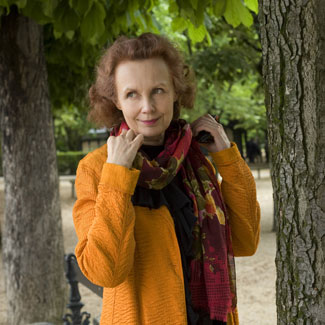
 Kaija Saariaho is a prominent member of a group of Finnish composers and performers who are now, in mid-career, making a worldwide impact. Born in Helsinki in 1952, she studied at the Sibelius Academy there with the pioneering modernist Paavo Heininen and, with Magnus Lindberg and others, she founded the progressive ‘Ears Open’ group. She continued her studies in Freiburg with Brian Ferneyhough and Klaus Huber, at the Darmstadt summer courses, and, from 1982, at the IRCAM research institute in Paris – the city which has been most of the time her home ever since.
Kaija Saariaho is a prominent member of a group of Finnish composers and performers who are now, in mid-career, making a worldwide impact. Born in Helsinki in 1952, she studied at the Sibelius Academy there with the pioneering modernist Paavo Heininen and, with Magnus Lindberg and others, she founded the progressive ‘Ears Open’ group. She continued her studies in Freiburg with Brian Ferneyhough and Klaus Huber, at the Darmstadt summer courses, and, from 1982, at the IRCAM research institute in Paris – the city which has been most of the time her home ever since.
Caroline Shaw
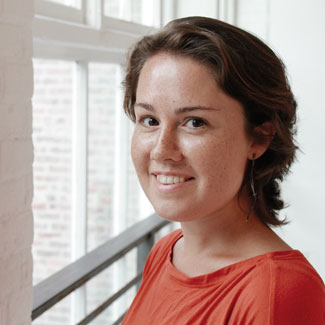
 Caroline Adelaide Shaw is a New York-based musician appearing in many different guises. Trained primarily as a violinist from an early age in North Carolina, she is a Grammy-winning singer in Roomful of Teeth and in 2013 became the youngest ever winner of the Pulitzer Prize for Music, for her enigmatic composition Partita for 8 Voices (also nominated for a Grammy for Best Classical Composition). She will make her solo violin debut in 2015 with the Cincinnati Symphony (MusicNOW).
Caroline Adelaide Shaw is a New York-based musician appearing in many different guises. Trained primarily as a violinist from an early age in North Carolina, she is a Grammy-winning singer in Roomful of Teeth and in 2013 became the youngest ever winner of the Pulitzer Prize for Music, for her enigmatic composition Partita for 8 Voices (also nominated for a Grammy for Best Classical Composition). She will make her solo violin debut in 2015 with the Cincinnati Symphony (MusicNOW).
Christine Southworth, composer
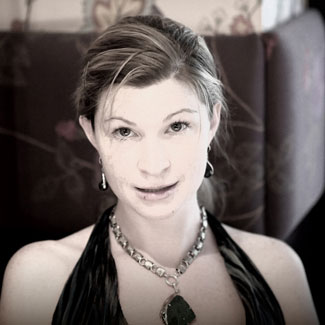
 Christine Southworth (b. 1978) is a composer and video artist based in Lexington, Massachusetts, dedicated to creating art born from a cross-pollination of sonic and visual ideas. Inspired by intersections of technology and art, nature and machines, and musics from cultures around the world, her music employs sounds from man and nature, from Van de Graaff Generators to honeybees, Balinese gamelan to seismic data from volcanoes.
Christine Southworth (b. 1978) is a composer and video artist based in Lexington, Massachusetts, dedicated to creating art born from a cross-pollination of sonic and visual ideas. Inspired by intersections of technology and art, nature and machines, and musics from cultures around the world, her music employs sounds from man and nature, from Van de Graaff Generators to honeybees, Balinese gamelan to seismic data from volcanoes.
Southworth received a B.S. from MIT in 2002 in mathematics and an M.A. in Computer Music & Multimedia Composition from Brown University in 2006. In 2003 she co-founded Ensemble Robot, a collaborative of artists and engineers that design and build musical robots. She is the general manager of the MIT-based Gamelan Galak Tika, and has composed several pieces for the group and performed at venues including Lincoln Center, Carnegie Hall, EMPAC, the Cleveland Museum of Art, several Bang on a Can Marathons, and the Bali International Arts Festival.
Davóne Tines, bass-baritone
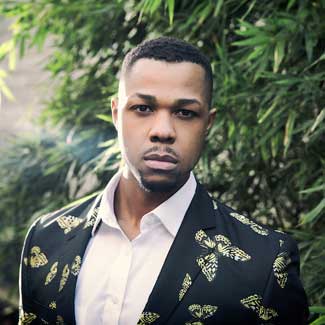
 Davóne Tines, deemed a “… charismatic, full-voiced bass-baritone …” by the New York Times, is building an international career commanding a broad spectrum of opera and concert performance. This past season included appearances with the Boston Pops in Symphony Hall and at Tanglewood, where he was a Tanglewood Music Center Fellow, as well as a debut with the American Repertory Theater in the world premiere of Matthew Aucoin’s opera Crossing, directed by multiple Tony Award–winning director Diane Paulus, for which the Wall Street Journal called him a “glowing bass-baritone” and the Stylus Music Journal said he “… brought the house down with his eloquent and painful singing” in the leading role of Freddie Stowers.
Davóne Tines, deemed a “… charismatic, full-voiced bass-baritone …” by the New York Times, is building an international career commanding a broad spectrum of opera and concert performance. This past season included appearances with the Boston Pops in Symphony Hall and at Tanglewood, where he was a Tanglewood Music Center Fellow, as well as a debut with the American Repertory Theater in the world premiere of Matthew Aucoin’s opera Crossing, directed by multiple Tony Award–winning director Diane Paulus, for which the Wall Street Journal called him a “glowing bass-baritone” and the Stylus Music Journal said he “… brought the house down with his eloquent and painful singing” in the leading role of Freddie Stowers.
Relive the 2015 Festival through our photo gallery
Thank you for joining us for an incredibly memorable week of adventurous music making and community. Relive the moments with our 2015 Festival photo galleries of concerts and scenes from around Libbey Bowl.
2016 Festival
2016 Music Director Peter Sellars
frames programming for 70th Ojai Music Festival
June 9-12, 2016
The Ojai Music Festival marks its 70th year in 2016 and to curate this milestone, Artistic Director Thomas W. Morris has invited opera and theater director Peter Sellars to serve as Music Director. For the 2016 Festival, Peter Sellars is shaping a program deeply rooted in the cultures of Ojai, starting new traditions and setting out fresh agendas for the 70 years to come. The Festival will take place June 9-12, 2016.
As the 69th Ojai Music Festival opens this week (June 10-14, 2015) with Music Director Steven Schick, the Festival’s 2016 Music Director Peter Sellars shares thoughts on his distinctive approach to programming the Festival:
YOLA
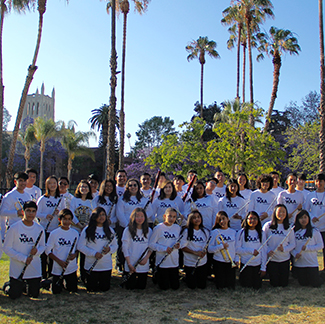
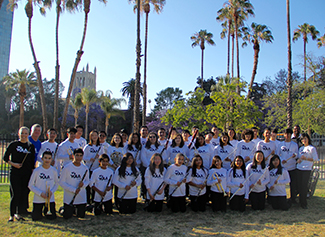 About the YOLA at HOLA Symphonic Winds
About the YOLA at HOLA Symphonic Winds
Through YOLA, the Los Angeles Philharmonic and its community partners provide free instruments, intensive music training, and academic support to students from underserved neighborhoods, empowering them to become vital citizens, leaders and agents of change. Inspired by El Sistema – the Venezuelan music education system that nurtured the LA Phil’s Music Director Gustavo Dudamel – YOLA has grown to serve more than 700 students at three sites across Los Angeles since its founding in 2007.
Comprised of 35 students ages 12 – 18, the YOLA at HOLA Symphonic Winds are founding members of YOLA at Heart of Los Angeles (HOLA). Currently, in its seventh year, the site at HOLA serves students ages 6 – 18 with intensive after-school orchestral instruction five days a week. A holistic approach fosters a sense of community and provides students with the opportunity to take advantage of HOLA’s exceptional programs and resource.
John Luther Adams on “Sila: The Breath of the World”
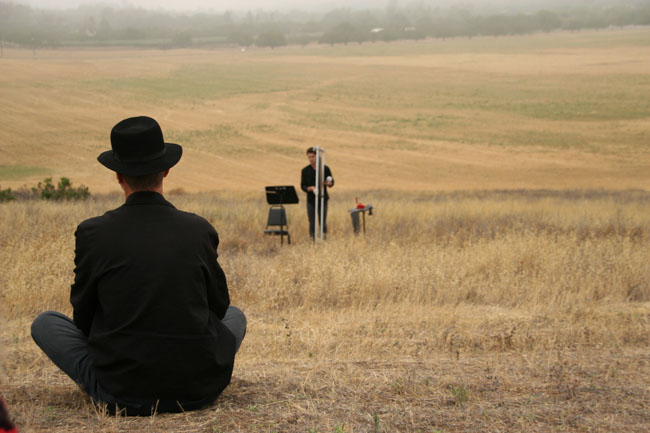
Composer John Luther Adams is no stranger to Ojai, with performances of his works in 2012 and 2013, including the ‘Inuksuit‘, featuring musicians placed throughout Libbey Park. Adams returns to Ojai this year for the West Coast Premiere of his new work ‘Sila: The Breath of the World’. Here he discusses the genesis of the piece and the significant differences in pieces written to be performed and heard outdoors.
“Songs are thoughts which are sung out with the breath when people let
themselves be moved by a great force…”
– Orpingalik, a Netsilik elder
In Inuit tradition the spirit that animates all things is sila, the breath of
the world. Sila is the wind and the weather, the forces of nature. But
it’s also something more. Sila is intelligence. It’s consciousness. It’s
our awareness of the world around us, and the world’s awareness of
us.
Over the past four decades most of my music has been inspired by the
outdoors, but heard indoors. With Inuksuit – for nine to ninety-nine
percussionists – I finally composed music intended from the start to be
performed and heard outdoors. In Sila: The Breath of the World, I
continue this exploration with a full orchestral palette.
Happy Anniversary HumanArts!
The Ojai Music Festival is fortunate to be part of a strong community of residents and businesses supporting the arts in the Ojai Valley. One of our longtime friends is HumanArts Gallery located in the downtown Arcade. Owners Hallie and Stan Katz share their story of how intertwined the Festival is with their move to Ojai.
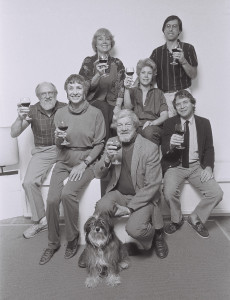 It was May 30, 1975 and most of the action was in Libbey Park where Michael Tilson Thomas was preparing to conduct the Ojai Music Festival. In a much smaller venue across the street there was another buzz happening — a new gallery in town was hosting its grand opening –- it was one of the only galleries in town at that time! Three couples, fairly new to town, decided to show an eclectic mix of pottery, jewelry, paintings, and sculpture, some of which they themselves made.
It was May 30, 1975 and most of the action was in Libbey Park where Michael Tilson Thomas was preparing to conduct the Ojai Music Festival. In a much smaller venue across the street there was another buzz happening — a new gallery in town was hosting its grand opening –- it was one of the only galleries in town at that time! Three couples, fairly new to town, decided to show an eclectic mix of pottery, jewelry, paintings, and sculpture, some of which they themselves made.
Truly one of the first places dedicated to contemporary fine craft in Southern California, it was known then as Running Ridge Gallery. The original partners were Bob and Barbara Grabowski, Bob’s sister Ruth Farnham and her husband John, and Jett and Sharon Spencer. Bob, Jett, and Sharon made jewelry; Ruth was a painter; and John was a sculptor. Barbara was the business manager.
Gerard McBurney, Director & Creative Director
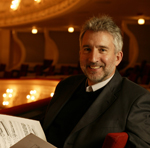 Gerard McBurney is a British composer and writer about music. Since 2006 he has been Artistic Programming Advisor at the Chicago Symphony Orchestra and Creative Director of their Beyond the Score® series. In this capacity, he had the good fortune to work closely with Pierre Boulez on a number of memorable occasions.
Gerard McBurney is a British composer and writer about music. Since 2006 he has been Artistic Programming Advisor at the Chicago Symphony Orchestra and Creative Director of their Beyond the Score® series. In this capacity, he had the good fortune to work closely with Pierre Boulez on a number of memorable occasions.
Learn more on the Beyond the Score® website >>
Photo Credit: Todd Rosenberg
Christina McPhee: How Ojai Inspires Me As An Artist
The audience members of the Ojai Music Festival are as eclectic, imaginative and passionate as the music performed and the artists who are engaged in the creative process. Once such patron is Christina McPhee, visual artist from the Central Coast, who shared her work with us inspired by the 2014 Festival.
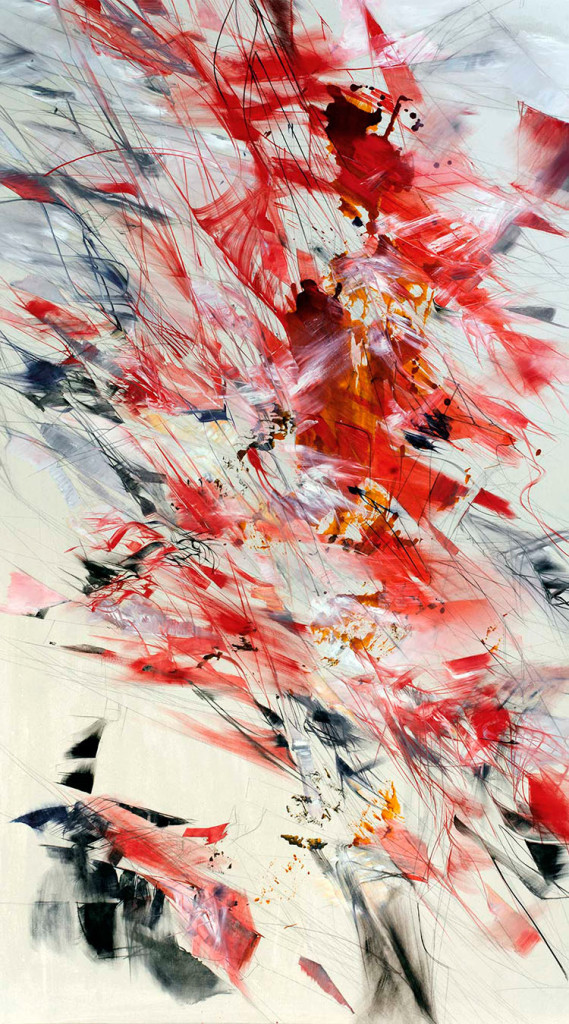
The Muslin-Drum // Ligeti Iterations :
As a child, I found sanctuary in piano practice. Each evening the required hour came with the delight of the fall of the keys, the fascination of synaesthesia’s colors with chromatic chords, and escape from external pressures. For no audience but my own brain, my ears connected with digits, and with structures of flight. Later I sought to materialize this experience in painting.
With my partner I built canvasses in translucent muslin, coated in clear, slightly crystalline rabbit skin glue, with taut surface like a drum. From the first the support and surface conditions set up a performance situation around color-shapes, linear thresholds and tensions of the stretched canvas. Interacting with these constraints set me into a graphic predictive process, to ramify lines from sound. The delicate surfaces pinged as the graphite slides across the rabbit skin. Dyes threw across the slightly glittering crystals of rabbit-skin embedded in the glue ground. The soft swish of liner brush extended murmur and glissando. Tcherepnin, Varese, Cage and Harrison crossed through this matrix. None stayed as long as Ligeti. Hundreds of repeats, listening to the cd of György Ligeti’s Piano Etudes, Books 1 and 2, as performed by Jeremy Denk in a Nonesuch recording of 2012, cast the studies into iterative material abstractions. Then I heard Denk play them live in concert at the Ojai Music Festival, in June 2014. An indelible impression, almost, a neurologic imprint…Elements of surprise, hurling passages, glissandos, rushes and stillnesses, darknesses leaching into light, shapes tumbling and subsisting in secret rhythms— these formal and performance incidents translate a code for a kinetic action through the instrument of the body onto the radiant surface.
10 Questions with John Luther Adams
Written by M. Sean Ryan with permission from BMI.
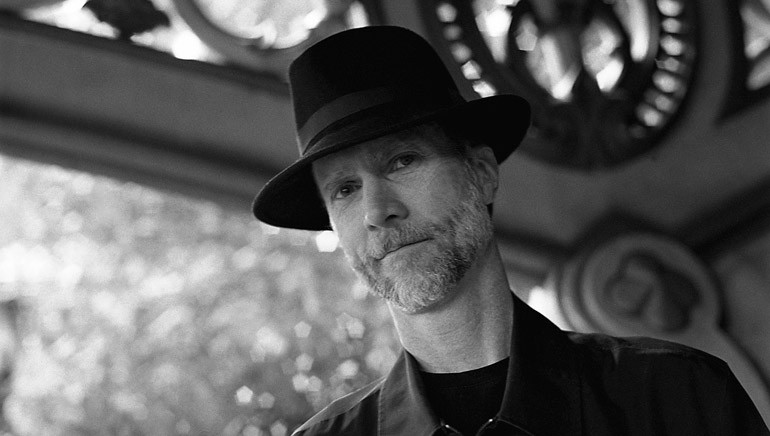
In writing or analyzing a piece of music, the notion of space is both multifaceted and unavoidable. For John Luther Adams, it is the root. His environmentally-minded compositions aren’t just inspired by geography and places he finds meaningful. Sometimes their performance demands musicians forgo the stage, scattering strategically instead around vast indoor and outdoor venues.
In this way, Adams has garnered a reputation for highlighting how we fit in to the world around us, musical or not. Pieces like “Inuksuit,” or, more recently, “Sila,” continue to redefine the immediate environment in which they’re performed, while his titanic opus “Become Ocean” has earned him two GRAMMY nominations as well as last year’s Pulitzer Prize in music. In addition to these prestigious honors, Columbia University’s School of the Arts recently announced that Adams will be awarded their $50,000 William Schuman Award this fall. The award recognizes “the lifetime achievement of an American composer whose works have been widely performed and generally acknowledged to be of lasting significance.”
On a recent call from New York City, the 62-year-old Adams opened up about the road that’s led him to his current standing as a world-renowned composer.
How did your relationship with BMI begin?
It would go back to the 1980s. I was a young composer thinking about affiliating with a performing rights organization, and ultimately what persuaded me — what did it was Ralph Jackson. A couple of years ago I wrote a piece on Ralph’s retirement singing his praises and talking about who he is and the difference he has made, not only in my life but in the lives of so many other composers.
In the larger musical landscape of new music, classical music, contemporary concert music — whatever you call this stuff that I’m involved with — Ralph is truly a force of nature. Now Deirdre Chadwick has taken over and like Ralph she’s an oboist. And like Ralph she’s a strong personality who cares passionately about this music. I feel really lucky to be working with her now.
In that stage of your career, when you moved to Alaska in the late ‘70s, your focus was political. Was music on the backburner?
Nothing took a backseat to anything else. I thought I could do it all: I thought I could be a full time environmental crusader; I thought I could live like Henry David Thoreau in the woods; I thought I could be a working composer, and I thought I could have a serious personal relationship and also play in the Fairbank Symphony. It took me a decade or so to realize that I had to make some choices. It was a very heady time. To be young and idealistic in Alaska in the late ‘70s and then into the early ‘80s — I wouldn’t trade it for anything.
View The 69th Festival Schedule For June 10-14, 2015
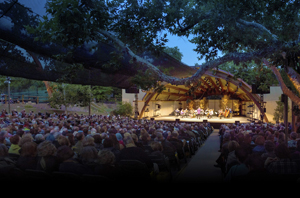
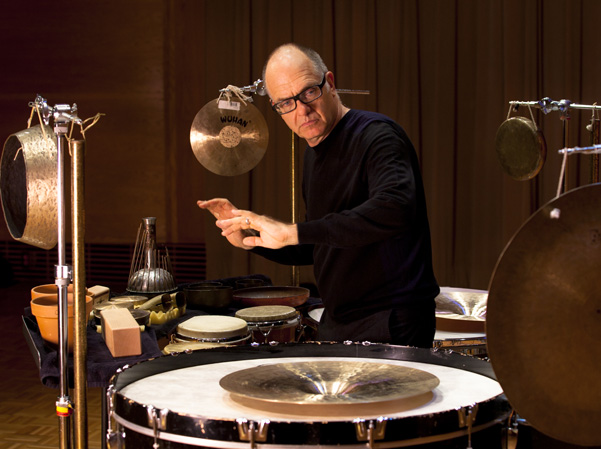 Percussionists are different. Their musical world has no fixed boundaries; there is no limit to the instruments they play and the sounds they make. There are no pretentious barriers between nature and artifice, no strictures on performing indoors or out. Their precursors reach back to the dawn of time and members of their guild are found in every culture. Hand a percussionist a random rock or the most exquisitely forged gong and he or she will make it speak, sometimes with breathtaking virtuosity born of the simplest gestures by which we interact, though touch, with our material world. So what does it mean that Ojai’s 2015 music director is a percussionist? Quite a lot if that percussionist is Steven Schick.
Percussionists are different. Their musical world has no fixed boundaries; there is no limit to the instruments they play and the sounds they make. There are no pretentious barriers between nature and artifice, no strictures on performing indoors or out. Their precursors reach back to the dawn of time and members of their guild are found in every culture. Hand a percussionist a random rock or the most exquisitely forged gong and he or she will make it speak, sometimes with breathtaking virtuosity born of the simplest gestures by which we interact, though touch, with our material world. So what does it mean that Ojai’s 2015 music director is a percussionist? Quite a lot if that percussionist is Steven Schick.
No one has done more to champion, interpret, and expand the repertory of contemporary percussion music than Steven Schick. Not only has he mastered the entire solo repertory – and more than doubled its size through commissions – but as a conductor, educator, and author he has deepened our understanding of the role of percussion in music’s past, present, and future. More importantly, as an artist of broad interests and deep convictions he has explored cultural issues well beyond the already boundless frontiers of his chosen specialization.
To a percussionist’s ear music begins with rhythm, color, and gesture and these are the elements that form the nexus of the diverse works and decidedly international array of composers of this all 20th– and 21st-century festival. Naturally, we’ll hear Steven Schick perform classics of the solo percussion repertory – compositions by Stockhausen, Xenakis, and Globokar, as well as more recent compositions by David Lang and Kaija Saariaho, and the American premiere of Roland Auzet’s staging of Kurt Schwitter’s Dadist masterpiece, Ursonate. But Steve will also conduct ICE (International Contemporary Ensemble), red fish blue fish, Renga, and musicians from CalArts, groups with which he is closely identified, in a broad array of ensemble works of varied scorings, including the West Coast premiere of John Luther Adams’ Sila. Among the distinguished soloists is cellist Maya Beiser playing pieces by Osvaldo Golijov, Michael Harrison, and Chinary Ung.
Other highlights are a sunrise performance of Morton Feldman’s For Philip Guston in which Steve is joined by flutist Claire Chase and pianist Sarah Rothenberg, Lou Harrison’s Concerto for Pipa featuring Wu Man, and Messiaen’s Vision de l’amen with pianists Gloria Cheng and Vicki Ray. This year’s “old timers” include Copland, Chavez, Ginastera, and Varèse, all with scores new to Ojai, save one late-night chestnut: Appalachian Spring.
2015 marks the beginning of a three-year celebration of Ojai’s roots in Southern California, where open exploration and cross-cultural dialogue are written into the DNA. It is therefore especially apt that this festival opens with a Wednesday night multimedia tribute to Pierre Boulez, seven-time festival director, on the occasion of his 90th birthday. Four concerts are devoted to his music, each in creative juxtaposition with works by Béla Bartók: the six string quartets and, as the finale, the Sonata for Two Pianos and Percussion. This means Steven Schick will have the last word: a snare drum diminuendo with which he ushers us across the fluid borders of his imagination into silence.
– Christopher Hailey
Christopher Hailey is a music historian specializing in new music. He is the Ojai Music Festival’s longtime annotator and host of Concert Insights, the Festival’s in-depth discussions held before each concert.
Listen and view Steven Schick’s playlist >>
View the complete 2015 Schedule >>
Embrace the Ojai Experience! Purchase your series passes now >>


